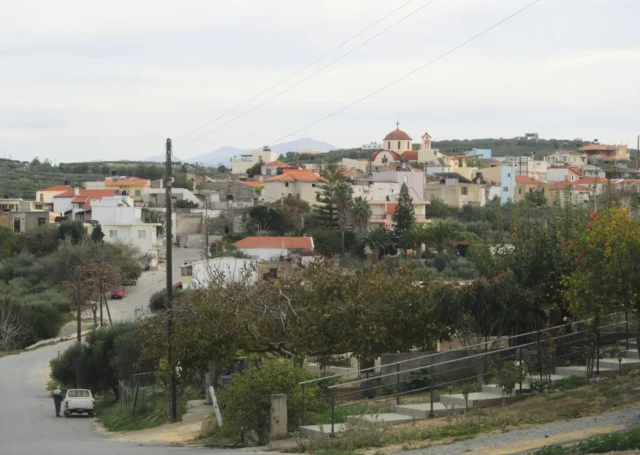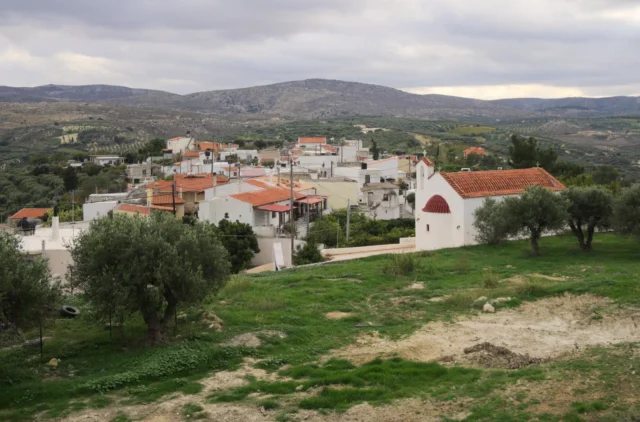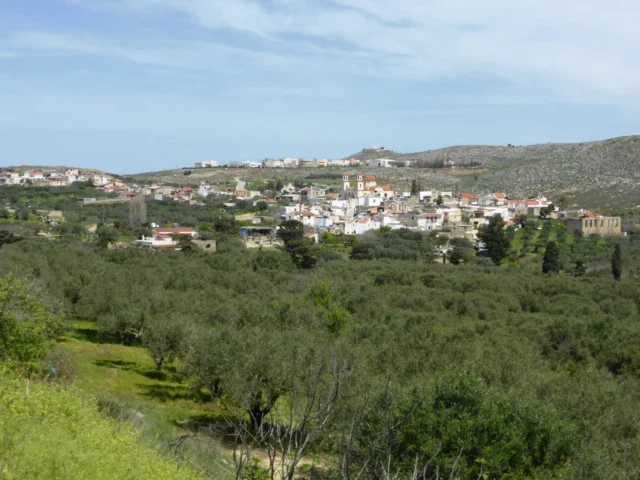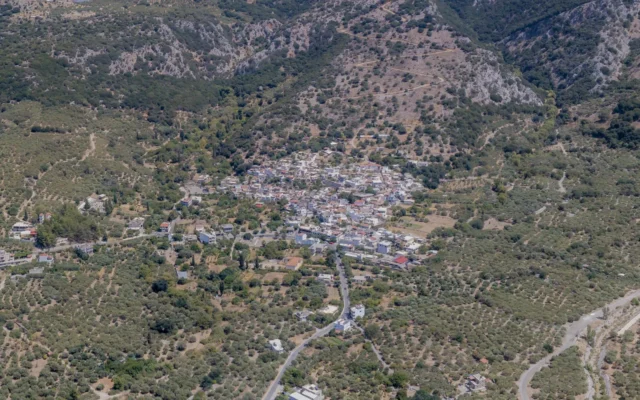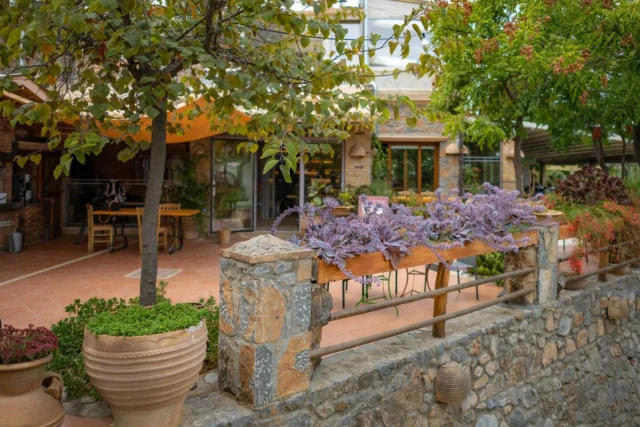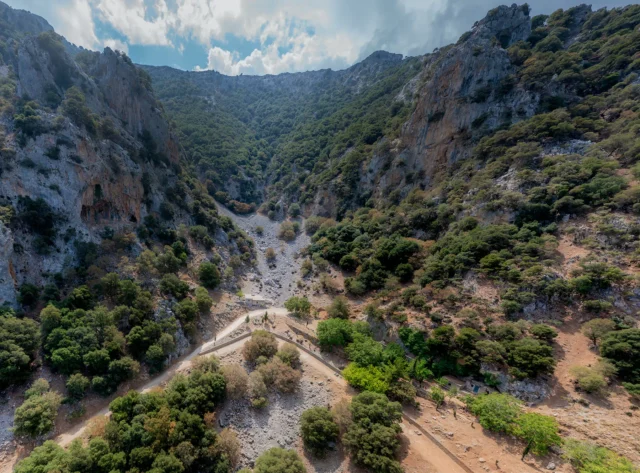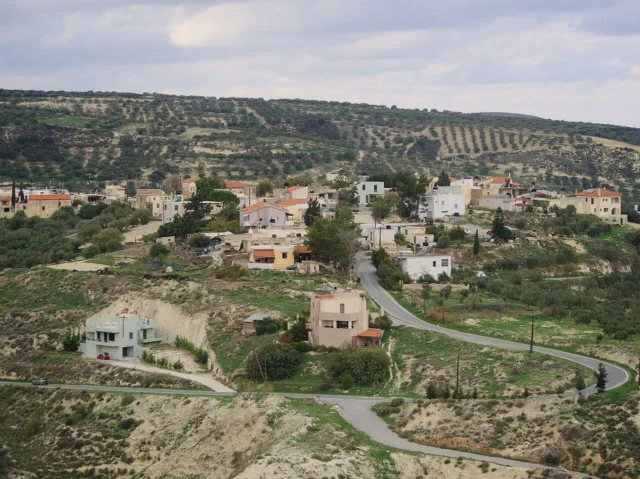34
listings found
Categories
Active filters:
Chersonissos, Herronissos (Ancient)
Chersonissos is an ancient Greek city located on the northern coast of Crete. It was inhabited as early as the Minoan period and continued to flourish under the Romans and Byzantine eras. The city served as the port of Lyttos, an inland city, and was an important center for trade and commerce. Archaeological excavations have revealed a number of significant structures, including a theater, early Christian basilicas, and harbor remains. The city's history is reflected in its coins, which feature various deities and symbols. Chersonissos is now a popular tourist destination, known for its beautiful beaches, ancient ruins, and lively nightlife.
Stamnoi, Chersonissos
With a history dating back to antiquity with notable features the Church of the Savior Christ and "The Tower" a Venetian-era, two-story building.
Kato Vatheia, Chersonissos
A village in the Vatheianos River valley, this settlement dates back to 1271 and features the Church of Agia Aikaterini.
Epano Vatheia, Chersonissos
Epano Vatheia is a settlement located in the Heraklion regional unit on the island of Crete, Greece. It belongs to the Municipality of Chersonissos
Galipe, Chersonissos
Galipe, a historic village in Heraklion, Crete, sits at 280 meters above sea level. First documented in 1299, Galipe's history reflects Venetian and Ottoman influences. The 16th-century Church of the Assumption of the Virgin Mary, featuring a Venetian tomb monument, and the 15th-century Old Church of Agios Nikolaos are key landmarks. A central stone fountain adds to the village's charm. Galipe's economy centers on agriculture, particularly grapes and olives. The village's population has fluctuated over time, reflecting its dynamic history.
Anopoli, Chersonissos
Anopoli is a settlement located in the Heraklion regional unit on the island of Crete, Greece. It belongs to the Municipality of Chersonissos
Aitania, Chersonissos
Aitania, a village in Heraklion, Crete, is 20 km from Heraklion. Its name is believed to be a corruption of the ancient city of Diatonion. Aitania is recorded in a Venetian document from 1212 as "Icania." The Venetian census of 1583 lists it as "Itagnia Cato" with 112 inhabitants and "Itagnia Apano" with 85 inhabitants. On October 12, 1856, a major earthquake with a magnitude of 8.2 struck Crete, causing significant damage and resulting in the death of 40 people in Aitania. In 1954, archaeologist N. Platon excavated a small, cave-like carved tomb west of Aitania at a site called "Fonias." The tomb contained approximately thirty Geometric period vessels. The village square is a central gathering point for residents and visitors, with traditional cafes. The Cultural Association of Aitania organizes a Cretan feast in the square every year on August 15th.
Elia, Chersonissos
Elia is a settlement located in the Heraklion regional unit on the island of Crete, Greece. It belongs to the Municipality of Chersonissos
Gonies, Chersonissos
Gonies is a settlement located in the Heraklion regional unit on the island of Crete, Greece. It belongs to the Municipality of Chersonissos.
Aposelemis river dam
The Aposelemis Dam, located on Crete's Aposelemis River, is an earthfill embankment dam that serves as a vital water source for Heraklion and Agios Nikolaos. With a reservoir capacity of 27.3 million cubic meters, it captures water from the Lasithi Plateau and Aposelemis basin. Built from locally sourced phyllite and limestone, the 61-meter-high dam features a central impervious clay core and a 660-meter crest. The project included relocating the village of Sfendyli, and addressed environmental impacts through mitigation measures. Treated water is distributed via a 74-kilometer aqueduct, aiding agriculture, tourism, and flood control. The dam faces challenges from rainfall fluctuations and climate change, necessitating ongoing monitoring and sustainable water management strategies, including alternative water sources and conservation. It stands as a complex project with environmental, economic, and social implications, embodying both progress and the need for sustainable water practices in Crete.
Agia Fotini Cave and Agia Anna Church
Located on Mount Louloudaki near Avdou village in Crete, this cave is formed by limestone erosion. Accessible via a dirt road and path, an entrance corridor, once an underground riverbed, leads to a larger chamber functioning as the church of Agia Fotini. A prominent stalagmite stands above the altar. The site, also a refuge during the Cretan Revolts, is believed to possess healing properties for infertility, linked to a tradition of the Virgin Mary creating it for Saint Fotini.
The Abandoned Village of Sfendyli
Sfendyli, a village in Crete, Greece, is now partially submerged under the Aposelemis Dam reservoir since 2012. Documented as early as 1577 and once a fiefdom during the Venetian era, the village was abandoned after residents were compensated. The fluctuating water levels create a spectacle for visitors. The 14th-century Byzantine church of Agios Theodoros remains. Nearby, a Minoan cemetery with 65 skeletons was discovered, adding to the area's historical significance.
Kainourgio Chorio, Chersonissos
Kainourgio Chorio, a historic village in Crete, boasts a rich history dating back to the Second Byzantine period. Despite its name, meaning "New Village," it has a long and storied past evident in its well-preserved landmarks. The village, located in the Municipality of Hersonissos, is nestled at an altitude of 220 meters. Kainourgio Chorio is home to the Foscolo Tower, a Venetian-era fortified residence that later underwent modifications during the Ottoman occupation. The village also houses the Church of Panagia and Agia Paraskevi, adorned with surviving fragments of frescoes from the Venetian period. The Venetian wine presses, some of the largest in Crete, stand as a testament to the region's historical wine production. The Wine Museum, donated by Ioannis Papadakis, offers a glimpse into the region's winemaking heritage, showcasing preserved wine production facilities and a collection of wines.
Koxari, Chersonissos
Koxari is a village in the municipality of Hersonissos, in the regional unit of Heraklion, Crete, Greece. It is part of the municipal unit of Gouves. The village is situated […]
Kokkini Chani, Chersonissos
Chani Tou Kokkini is a settlement located in the Heraklion regional unit on the island of Crete, Greece. It belongs to the Municipality of Chersonissos
Kalo Chorio, Chersonissos
Kalo Chorio, a semi-mountainous village in Crete, Greece, boasts a rich history dating back to the Minoan period. At an altitude of 320 meters, the village offers panoramic views and nearby gorges.
Chersonissos, Chersonissos
Limenas Chersonissou, on Crete's northern coast, is a popular tourist destination with a long history. The ancient city of Chersonisos thrived during Minoan, Roman, and Byzantine eras, serving as a vital port and episcopal seat. The modern town, part of the Heraklion regional unit, features remnants of its past, including an aqueduct and theater ruins. Its economy relies on tourism, with numerous hotels and restaurants. While cosmopolitan, it retains aspects of traditional Cretan culture, evident in the inland village of Chersonissos and its church. Family and social connections remain important, and traditional hospitality is common.
Stalida, Chersonissos
Stalida is a settlement located in the Heraklion regional unit on the island of Crete, Greece. It belongs to the Municipality of Chersonissos
Avdou, Chersonissos
Avdou is a settlement located in the Heraklion regional unit on the island of Crete, Greece. It belongs to the Municipality of Chersonissos











